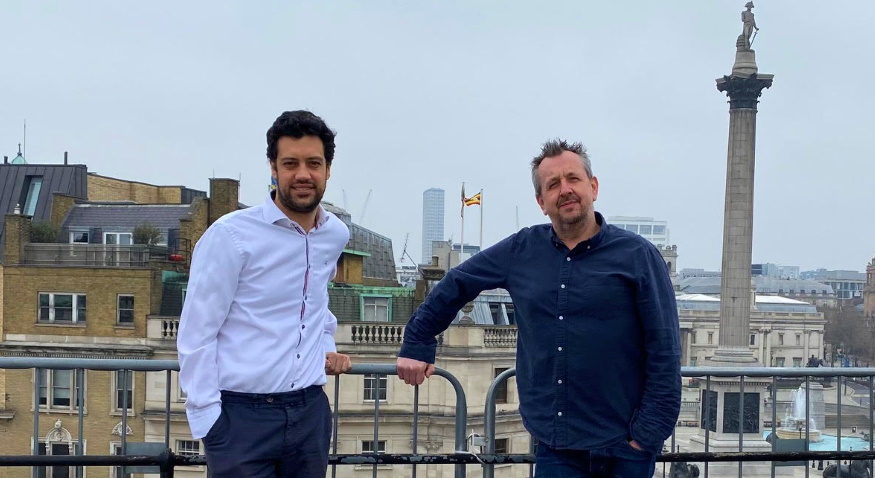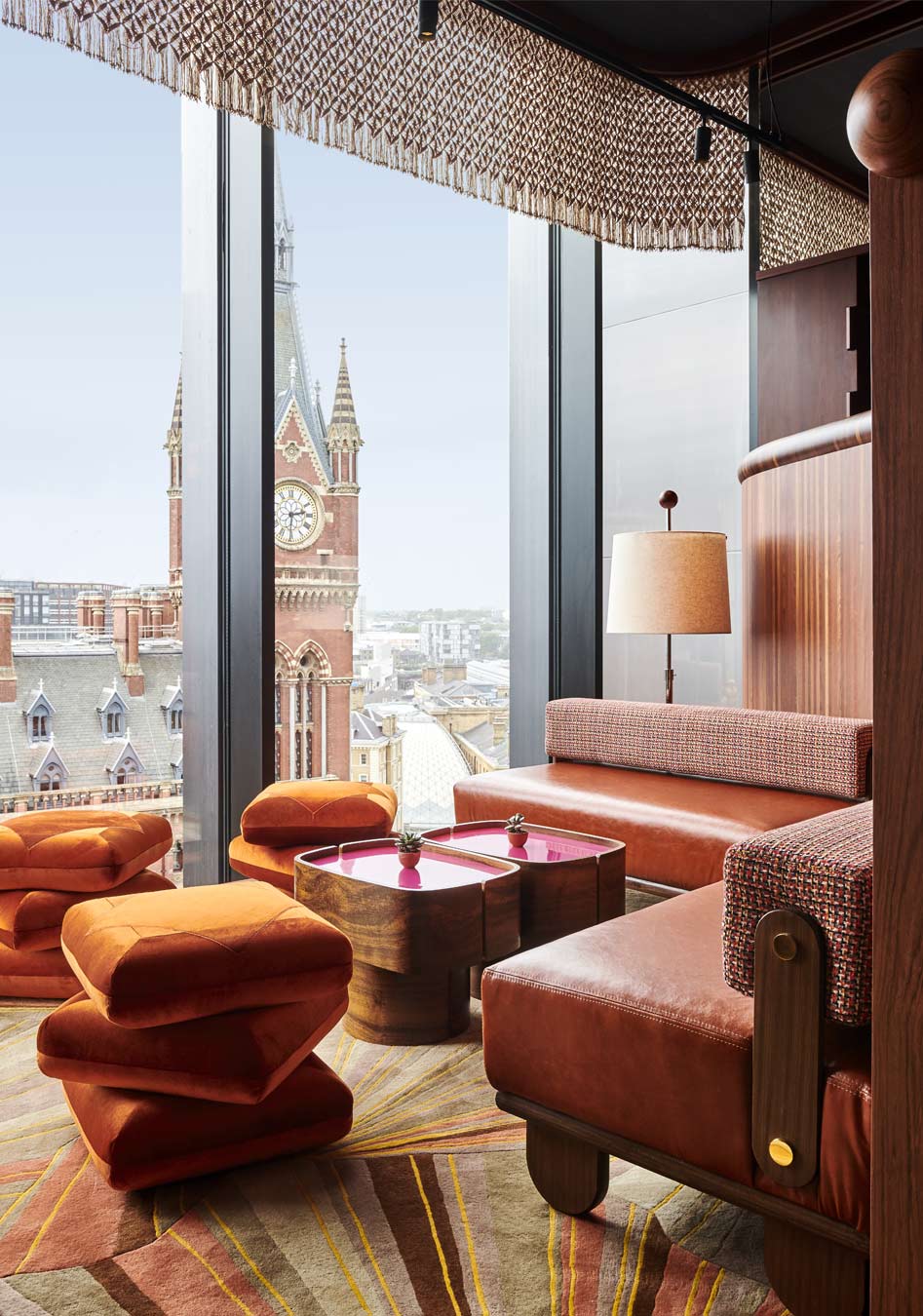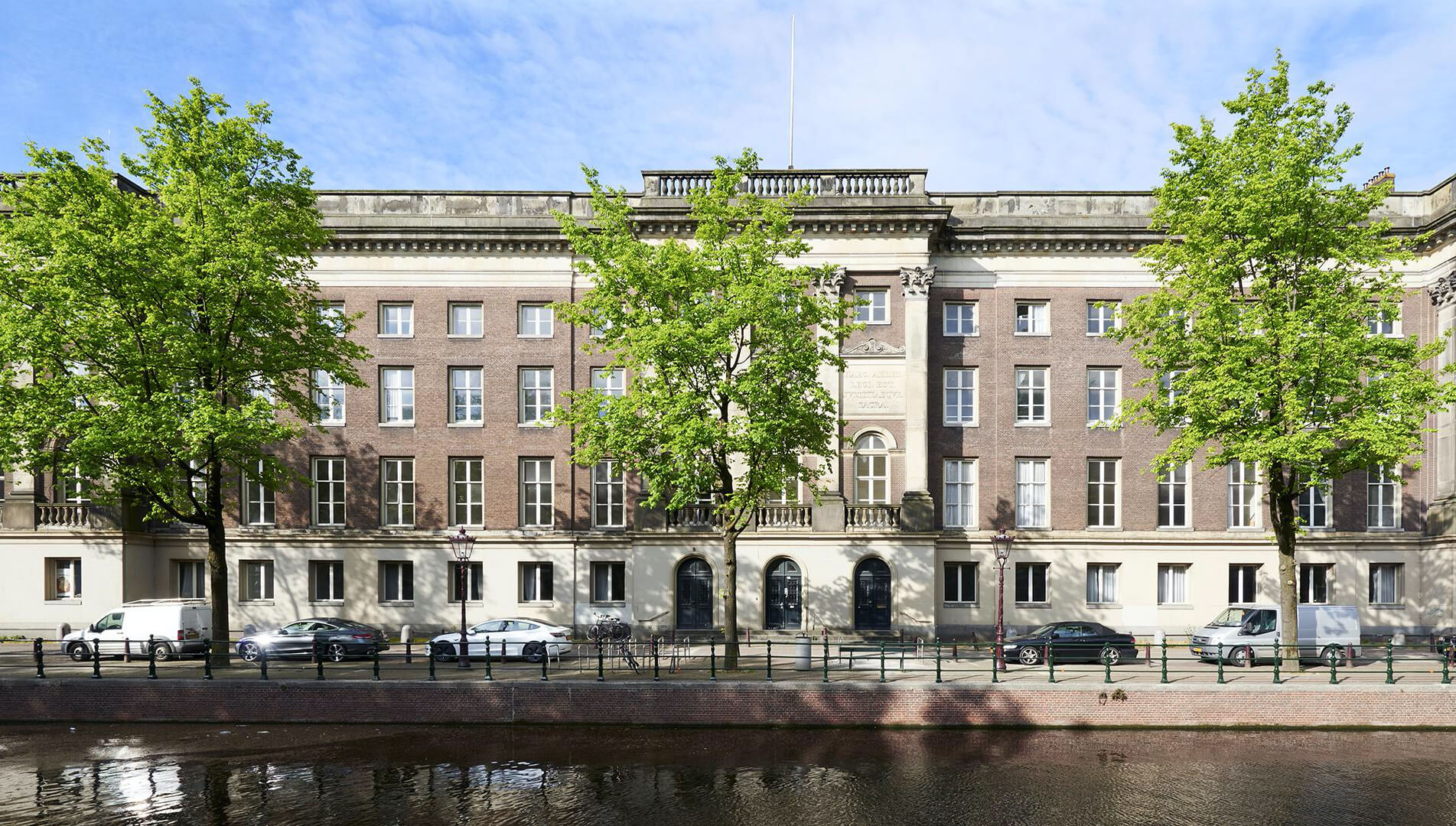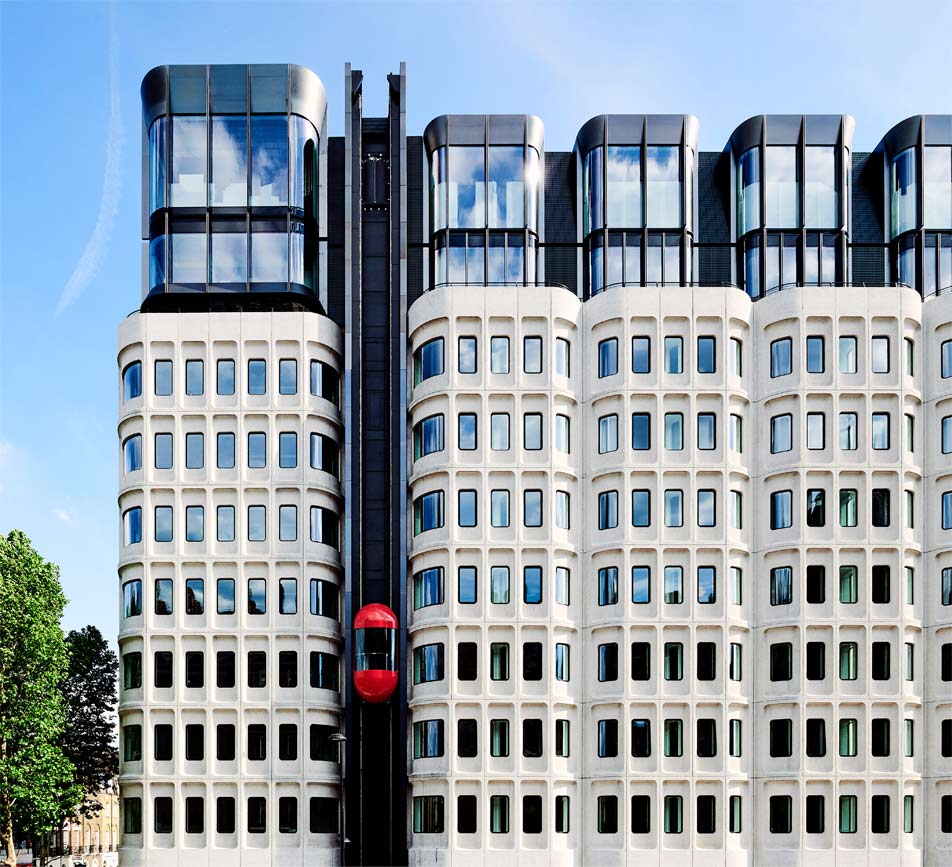
Leadership
Project Directors Howard Jones and Marco Piras, key members of the leadership team, discuss how Archer Humphryes Architects create world-leading hotels, including Chiltern Firehouse, The Standard in London and the Rosewood in Amsterdam.
Q Major hotel projects are team efforts. How do you organise your design teams at Archer Humphryes?
HJ As project directors, we both lead design teams on different projects – supporting David Archer and Julie Humphryes visions. Admiralty Arch (for Hilton Waldorf Astoria on The Mall) is an unusual project, as Marco and I are both involved together. It encompasses base-build, fit-out and interior design. I’m also running the construction of Penderyn Whisky Distillery and Visitor Centre on site currently in Llandudno and further individual projects including Chiltern Firehouse. Marco is leading on Rosewood Amsterdam, which will be the last new hotel allowed in the city centre, and he also has a team on a West London private residence.
MP There are 30 of us altogether at Archer Humphryes. We have some fixed teams and some groups are fluid. This enables skills to be transferred and expertise to be added at the correct stage of a project. With building this flexibility into the structure of delivering a project, risk is removed and ensures overlapping at the right juncture for quality control and peer review. Teams increase and decrease, according to the stage and scale of the project requirements. Project Architects wrap start to end, to ensure clients have continuity and maintain the contract, where we are usually appointed as lead consultant and interior designer concurrently. Different skills and knowledge are applied for multiple tasks. As the team at Archer Humphryes are all architects, they all excel at technical detailing. We look for combined knowledge and experience in selecting teams for shell and core, for example, whereas for interior design we employ people who have flare for spatial ingenuity, with presentation aptitudes specific to working in an industry that attracts high net worth individuals and entrepreneurs.
HJ It’s good to have a wide range of experiences for understanding construction methodology. Our architects have multiple skillsets and many have been trained internationally and, in the UK, adding to diversity and accomplishment within the studio. We often collaborate with other design teams on a project – sometimes coordination can be challenging, particularly when working in several time zones with clients with hectic schedules. We have found a way to lead our teams, prioritising tasks succinctly, and explaining complex issues successfully through communication, collaboration and flexibility. With this broad range of design skills in our team we have the confidence through our track record of project completions to ensure our clients achieve remarkable schemes.
Q What do you think hospitality clients, and customers, are looking for these days, and how is this changing?
HJ Our hotel clients have recognised that they need to stand out from the crowd, and their clientele expectations have risen in the past few decades in the hospitality sector. Financing and cost of land for desirable locations, has seen an emerging hotel industry during my career, which some of our clients have been pioneers, generating large luxury brands and covetable boutique hotels. Travel, finance growth, press, coverage and social media all contribute to an awareness and indicates the importance design now plays as a commodity in architecture and design. Not only are the customers interested in a certain level of luxury, but they are generally wanting to see a ground breaking design – that was certainly the case with The Standard in London, which has picked up many design awards in the past year.
MP While I’d agree that this is certainly the case with The Standard, where the customers tend to be young and affluent, it does depend on the clientele and the culture of the geographic location. On Rosewood Amsterdam, for example, the requirement is for a more timeless design, and we’re working with a more classic material palette of black lacquer, marble, polished steel and chrome. Significantly, it impacts on the food and beverage areas, plus the hotel activities. At the Standard London there is a hedonistic party scene with DJ’s and all day effortless dining. The Rosewood Amsterdam in contrast will reflect the genesis of the original ‘ palace’ that it will be housed within next to the canal.
HJ Chiltern Firehouse was completed in 2013, creating a timeless, popular venue, outstretching historic ‘grand dames’ in London with celebrities and presidents alike flocking to attempt to grab a table at the hottest destination in the city. This is helped, I think, by the design not taking a flavour-of-the month approach. In terms of what’s been changing in recent years, I’d say that hotels definitely want their restaurants to become destinations in their own right.
MP Clients are also asking us for flexibility of space. For example, we’ve been asked at Rosewood Amsterdam to create a grand library for all the guests that could also become part of a private room that could be booked out. Hotels are also looking to be able to provide an exclusive experience, whether it’s a recording studio, a whisky distillery, a cinema or even pantries and bicycle cupboards for suites.
HJ And at The Standard, we designed outdoor bathtubs on some of the balconies that we knew would be popular on Instagram. We always talk about these nuggets of Instagram moments early on the design process - those are the things that will be getting everyone talking when it opens. Often how we illuminate table settings is for the ‘instant’ sharing on social media of what the chef’s made and how fantastic the cocktail looks against people’s complexions and ‘glow.’
Q Chiltern Firehouse and The Standard in particular have been hugely high profile and successful. How important is the design to the success of such venues?
HJ It’s very important –without the design, they wouldn’t be able to open with as much fanfare. But it can’t all be down to the design – there is also the level of service. People will go because of the fantastic food and because they are treated very well.
MP The design is of course important, but the success also depends on the brands’ durability and consistency. At Rosewood, for example, it’s all about the level of service and the little details, such as knowing where people will want to put their luggage without having to lift it, and how much space they’ll need for it, and making sure they have the right pressure of water coming out of the shower head. Our technical knowledge of where to put the light switch, not to have cold shoulders whilst sleeping, to be comfortable when socialising in the restaurant are all part of the architects responsibilities that assist operators with our know – how, gathered over the years by Archer Humphryes Architects. When combined with the design, this generates both a beautiful and practical design– working with many brands with their own standards, means our studio has immense knowledge which guides best practice in our designs. Especially now with sustainability and long term ownership, we strive to build these objectives into the core principles of construction from the start.
HJ At Chiltern Firehouse, I think the design of the public spaces works very well and is very important to its success. You can see everything that’s going on – you can see and be seen. This creates a socially energised space which invites people in immediately.
Q What are the joys, and challenges, of re-purposing historic buildings for hospitality use?
HJ I love working with existing buildings. It gives you a certain character to play off and something to be inspired by. There’s also the satisfying feeling that you’ve saved a building by giving it a new use, as we did at Chiltern, which had been out of use for years after closing as a fire station. Of course, existing buildings do come with their own difficulties - threading services through the building is particularly hard. It’s a challenge, but a good challenge.
MP Yes, I also like refurbishment projects – that’s what you learn to do if you train to be an architect in Italy as I did. It does mean however that every room can end up being its own room type – we have 137 different ones at Rosewood Amsterdam and if you think that each room needs about 15 drawings, that’s nearly 2000 drawings.
HJ At Admiralty Arch Waldorf Astoria, we’re taking inspiration from the original Aston Webb detailing of 1910, and it will be quite a classic design, although it will be a little different in the new build basement areas.
Q Do you think that the experience of the Covid-19 pandemic will affect the design of hospitality spaces as things (hopefully) get back to normal later this year?
HJ One client was talking about moving away from soft fabric finishes to hard surfaces at one point last year, but the scientific evidence contradicts this. It would certainly be useful to have some sort of design guidance for this backed up by science. There’s also been some discussion of ventilation systems that can change the air more frequently, although no-one likes losing space to plant. Some clients have been wondering whether they need to be able to accommodate extra spaces for guests who might want to hire out a private dining area. And Chiltern Firehouse is expecting that guests might be increasingly keen to dine outside, so we are designing a glazed cloister for the courtyard and some Covid screens with exquisite joinery.
MP When we were designing Yamabahçe, a Turkish restaurant at St. Christopher’s Place last summer, it was an opportunity to design washrooms where you touched surfaces as little as possible.
HJ It is interesting to consider whether post-Covid, we will revert to our pre-Covid selves, with all the ways of doing things that we had before. I tend to think that as humans are inherently rather lazy, we will end up reverting to type and that the pandemic won’t leave a lasting impact on hotel design. In fact, some anthropologists suggest an active party scene like the roaring 20’s will happen, social energy awaits us from hibernation. We hope.




